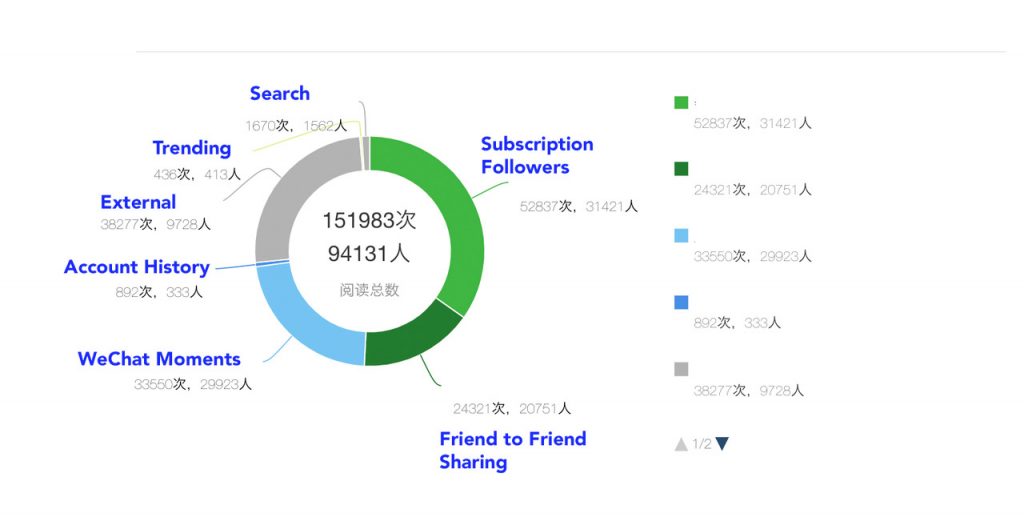“WeChat is not your Facebook, it’s your Chinese website (especially considering that website searches in China are little to none.)
While Weibo is, for all intents and purposes, your twitter, Douyin is your Snapchat-turned-Instagram concoction”
by Joshua R. Bunnell
China has a way about itself, a way at turning everything you know upside down. At least, that’s what it did for me. With a degree in International Development and a concentration/thesis focused on clean water development in China, I took my first job out of university (via an internship) at a research center doing data and policy analysis.
Three years later and now I’m the Chief Marketing Officer at nihub Innovation Center. Like I said, China has a way about itself… but let’s dive into the role WeChat plays in social media marketing in China first.
Social Media in China
Social media in China starts and ends with WeChat. While popular platforms like Weibo or Douyin (a.k.a. TikTok) attract high views and engagement through video, open-source sharing, etc., WeChat serves a purpose beyond social media itself as the holistic center of your digital presence in China. Throughout Europe and the Americas, every first-business-meeting is precluded by a quick browse of the other side’s official company website and maybe their LinkedIn Page to see what they’re all about.
In China? You search for their WeChat Official Account (a.k.a. WOA) and definitely take a quick peruse through the WeChat Moments (similar to an individual’s Facebook page) of whoever you’re meeting. WeChat is so ingrained and convoluted between professional and personal culture than a common joke we have amongst the team is that in every interview we ask to see what stickers (personally saved GIFs) the new recruit has on their WeChat.
Screenshot from client account with 4,875 followers; average post read around 500
98,985 individual visitors over eight months span; 157526 total visits.
The takeaway from this is that WeChat is not your Facebook, it’s your Chinese website (especially considering that website searches in China are little to none.) While Weibo is, for all intents and purposes, your twitter, Douyin is your Snapchat-turned-Instagram concoction, and a plethora of others platforms from Toutiao to XiaoHongShu (Little Red Book) fill in all the gaps, your WeChat is the perfect place to center it all and drive the traffic.
Why WeChat Stands Out
WeChat’s stand out is in the overwhelming and intruding presence of the platform in the daily lives of everyone in the country. While functionality wise the biggest difference between Facebook and WeChat is WeChat’s built-in content editor and publication for each account (as opposed to linking your direct website / Linkedin blog to your facebook), the influence of each platform is played out in a completely different way.
Facebook relies on heavily targeted, precise advertising campaigns over a plethora of cultures, languages, and regions. WeChat relies on sheer numbers, high-quality content marketing, and word-of-mouth “guanxi” tactics to drive successful campaigns, organic growth, and a strong digital presence.
Even for smaller accounts and small businesses just getting started on their WOA, they may only have under 5,000 followers and average post reads of 500 – 1000 per post; yet the backend account data will show account visitors (the total engagement you’ve had on your accounts “landing page” and related links) to be over 100,000 unique visitors and maybe 150,000 – 200,000 visits (see photo above for reference).
Best Practices To Stand Out
When it comes to WeChat, and China really, the opportunities are endless and putting your own style into whatever you do is key. When starting up however, following some simple strategy can make limited resources go a long way. Focusing on WeChat (as per our experience and recommendation), you first need to register your official account.
You have two options between a limited-publication Service Account (four broadcasts per month) and a daily publication Subscription Account. Our recommendation, especially for startups, small businesses, etc. is go for the Subscription Account to prioritize your content marketing, brand exposure and growth, and community building, while losing out of some limited functionality to link to most tech-heavy targeting / analytics platforms (which are out of their comfort-zone in China anyway). While the preference of Subscription over Service accounts for WeChat marketing remains an unpopular opinion in China, it’s one we hold near and dear to our hearts, based on our own experience.
Looking For More Info?
At the end of the day, China’s landscape, especially around social media, is deserving of its permanent status as confusing, opaque, and often a bit scrappy. If you’re planning to come into the space, our straightforward recommendation remains to start simple but quick, and build organically from the ground up with a WeChat-centric approach. Of course, if you have any questions on social media, incorporation, or raising funding in the Chinese Market, don’t hesitate to reach out to us at www.nihub.co or drop me a line any time at joshua@nihub.co.
P.S. Also check out our last post on WeChat here.
At nihub, we work with one simple goal in mind: to help foreign entrepreneurs, startups, and innovation come into the Chinese market and scale. Easier said than done, this line of work is more complex than one would imagine. With a focus on investment, either through our own fund or established VC partners, we help Western startups raise the funding they need while also following through on the operational side as well.
Whether that means company registration and incorporation, accounting and visa, or marketing strategy and content creation, we do it all. It’s here where our understanding and expertise in Chinese social media, relevant platforms, and strategy came to be.
Through our “nichat” service we offer our startups and clients a one-stop solution where we create & format content, develop strategy for, and manage their WeChat Official Accounts, alongside supportive platforms like Weibo & Douyin.





